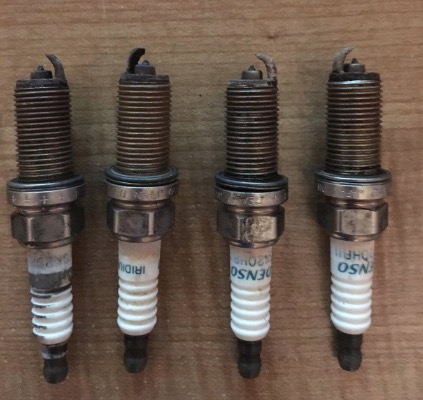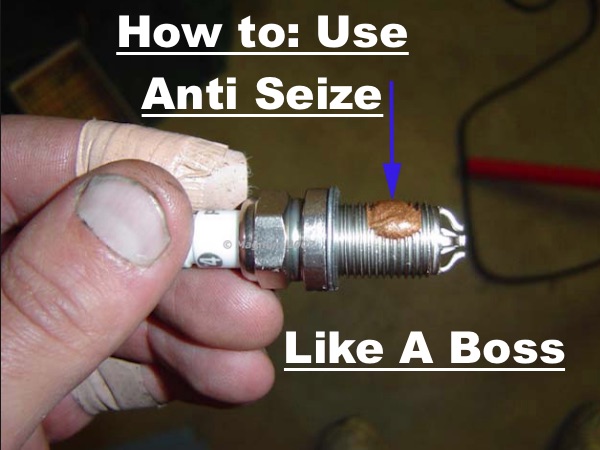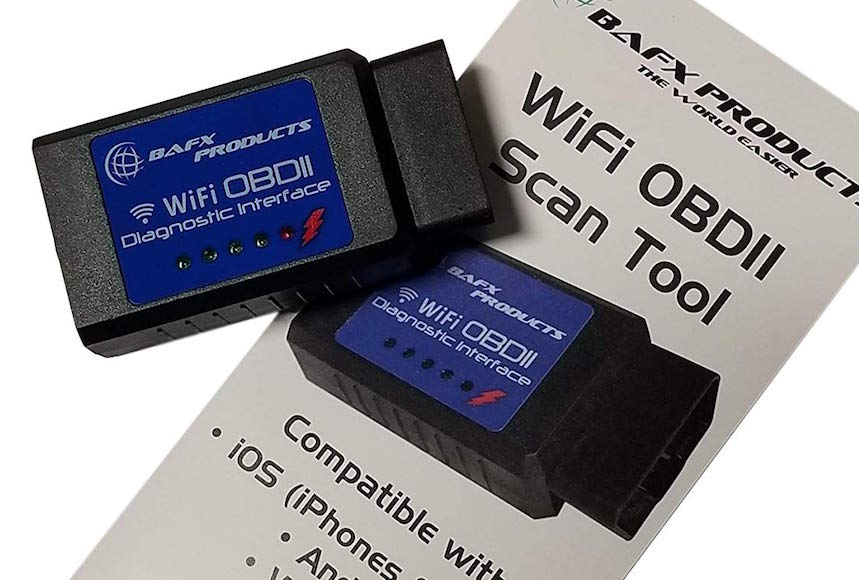There is a lot of debate online about what kind of spark plugs to put in your Toyota Prius 2004-2009 Gen 2. It pretty much goes like this, someone posts what kind of spark plugs they should buy for their Prius and a super long heated debate ensues about NGK, Denso, and Autolite plugs.
There are probably more than 10 different manufacturers that all make plugs that will fit our gen 2 Prius. Does that mean they will work well in your car or truck? No, unfortunately not. Also, no one can tell you what to do, if you want to run champion plugs in your Toyota then, by all means, go for it. Just know, that it isn’t worth the risk to put non-oem spark plugs in any vehicle and especially in a Toyota Prius.
Quite simply the absolute best way to keep your 2004-2009 Toyota Prius engine happy is to use either Denso or NGK Iridium OEM specified plugs. But, here is the major catch, you need to make sure you are using plugs purchased from a verified NGK or Denso seller. More about that below with links to verified sellers on Amazon.
Table of Contents
Spark Plugs 2004-2009 1.5l Toyota PriusOEM Part #s:

The only plugs you should be putting in your Prius engine are Laser Iridium plugs from NGK or Denso that match the OEM part number. Make sure to buy from either a seller that has been verified as selling authentic plugs or from a local auto parts store that is an authorized Denso/NGK supplier. There is a string of fake Denso and NGK plugs being sold online that can cause engine failure, misfires, and more problems than saving $20 buying plugs online is worth.
All links below go to Amazon searches for the part number. If buying on Amazon read the reviews and make sure the seller is actually selling REAL not FAKE plugs!
- Toyota OEM Part #: 90919-01240
- Denso Plug Part # (same exact plug as factory listed above): Denso Iridium Sk16R11
- NGK Plug Part # (OEM Fitment/Recommended): NGK Iridium 5464
Anti-Seize On The Plugs?:

You can apply a tiny bit of anti-seize to the threads of the new plugs. You do not have to, and because the Toyota Prius engine is not known for plugs getting stuck, it is likely not needed. Also just an FYI– most manufacturers warn against using anti-seize on spark plugs. This is because if you use too much it can cause grounding and heat displacement issues as well as it is easier to overtighten a spark plug with lubricant on its threads. However, for people that have replaced more than one set of spark plugs that haven’t had anti-seize and have literally welded into the cylinder head, a dab of anti-seize can save a lot of headaches for the next mechanic.
On these little four-cylinder Prius engines, the plugs are really easy to get to.
Installation Pro Tips:
- A tiny bit of Nickel Anti-Seize can be used on the threads of the new plugs.
- Read this guide about anti-seize that I wrote on this site where we dig into the science behind anti-seize. On these engines do you really need it? No, but if you do it properly it doesn’t hurt. The second you remove the plug once and go to reinstall it (say you want to visually inspect them) then the coating from the manufacturer is no longer on the thread and you DO NEED anti-seize. Once again a tiny tiny bit goes a long long way.
- 5/8″ is the size of the Spark Plug socket you need to change the plugs on a Prius (Most Toyota’s for that matter)
- My favorite is a swivel magnetic 5/8″ Spark Plug Socket
(Cheap on Amazon here) that work amazingly well. No more rubber boot coming off on the plug or dropping spark plugs– these are the new cool tool in 2020. A 14mm deep socket with a magnetic pickup tool also works. I do believe the real OEM size for these plugs is 14mm socket, however, a 9/16″ spark plug socket also works or a 14mm deep socket. These plugs are not recessed deep in the head so you can get them out easily with a magnetic tool
.
- My favorite is a swivel magnetic 5/8″ Spark Plug Socket
- Spray Using Pressurized Air around all Spark Plugs & Coils to Remove Sand / Grit / Dirt before removing plugs.
- This is good practice in every car. Give the car a long spray down with an air hose. Then after you remove the coil goes down into the spark plug hole and spray around the plug and blow out all the dirt that has settled around the plug.
- Have the plug ready to go right into the engine, every second that the hole is open in the engine something can fall down into the cylinder and ruin your engine. Be prepared and do not leave the spark plug out for long at all.
- Learn How to Feel When Spark Plug is Tight
- These plugs have crush washers. There is a specific feeling of tight on a crush washer spark plug. There is also a difference in feeling between a crush washer plug and a tapered seat plug— read about how to spot the difference here. You can practice on a car or two at a pick-n-pull and just really overtighten a plug or two that are already in the car to feel when they strip out. Choose a car no one likes so you aren’t ruining any engines on anyone (pick one already torn apart and ruined ideally).
- If you are really concerned with this, or a total beginner, then use a torque wrench and follow the directions specifically from the FSM for the car you are working on. With spark plugs, you are going to want a really accurate 3/8″ drive torque wrench like this CDI version
(Same as Snap-On but way cheaper).
- DO NOT USE A 1/2″ torque wrench on Spark Plugs. It isn’t accurate enough at low torque numbers and the risk is HIGH you strip out a Spark Plug Hole.
- Dielectric Grease is Great but Misunderstood by Beginners
- Dielectric Grease does not “conduct electricity” as some people believe.
- It keeps moisture out of connectors, helps the rubber spark plug boot not stick to the ceramic spark plug, and can help make connectors easier to remove later on. It is also safe to use on rubber.
- I put it on the spark plug ceramic part and around the inside of the coil boot to help with removal later. I also put some on tricky connectors that may be exposed to moisture. You can put it where two electrical connections are made, just try to use a tiny bit and remember it isn’t a magic conductivity potion. In fact, it doesn’t conduct electricity at all, rather it helps keep dirt and moisture out.
- Silicone Paste is cheaper and the same as dielectric grease
— here is some awesome stuff highly recommended by professionals on Amazon for really cheap.
Conclusions:
- Buy Denso (Link to Denso’s Spark Plug Part # Finder Here) or NGK (Spark Plug Finder on NGK Website) from an authorized seller (O’Reilly, Autozone, Pep Boys, etc)
- If a misfire happens immediately after doing a spark plug change, you may very well have a misfire caused by a faulty new plug that visually looks okay. Read about what happened to me here on my 2TR-FE Tacoma.
- Anti-Seize works great when you use the right kind and only apply a tiny bit to the middle of the spark plug threads. Full guide here on using anti-seize.
- You DO NOT need to throw new coils just because the truck needs new spark plugs. Replace coils one at a time as a misfire happens and your diagnosis that the coil is the problem. They can last longer than the engine will, and many people think they are doing preventative maintenance, but in reality, they are throwing money away. You can buy a spare coil and have it with you– that is a great idea, but just please stop wasting money on new coils when they aren’t needed.
- Iridium Spark Plugs have a life of around 120,000 miles in these Priuses. I recommend replacing them at 100,000 miles since they are so easy to get to, and why not help all 80 horsepower of your Prius.
Have fun, stay safe, and remember to diagnosis problems and not throw parts!






Very good!
I just replace for spark plugs in my prayers and when it started it was nice fine very bad.
I put in the recommended NGK iridium spark plugs and that was all I did was careful not to get dirt on them or bend gap, etc.
Perhaps one is very faulty even though it was new.